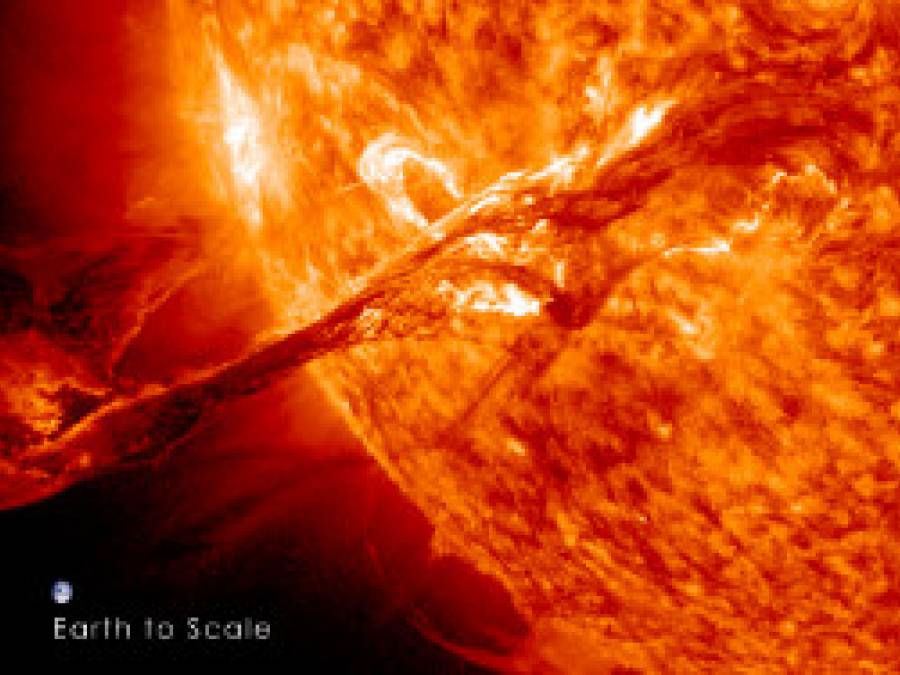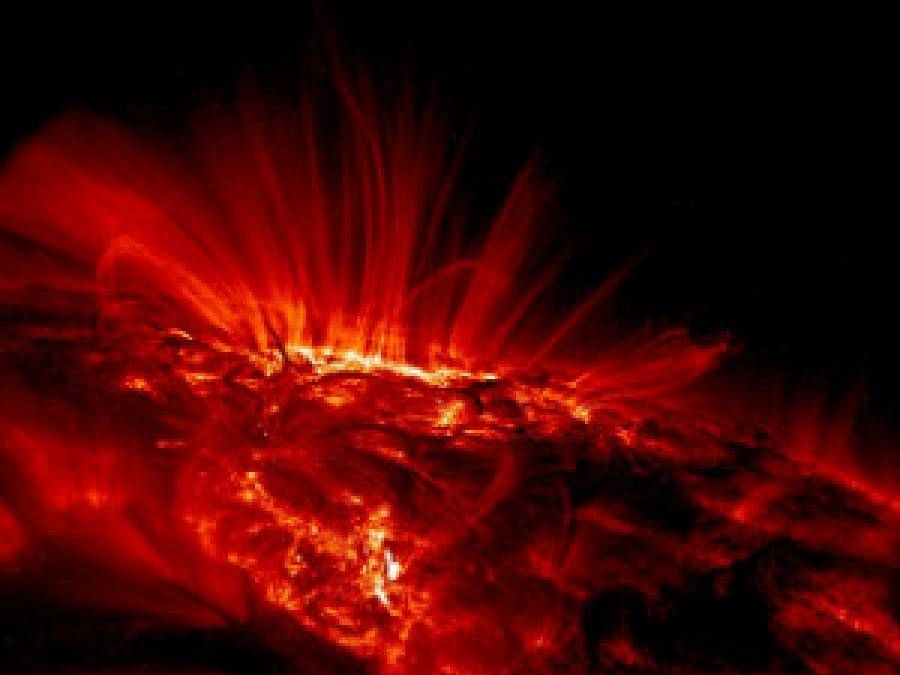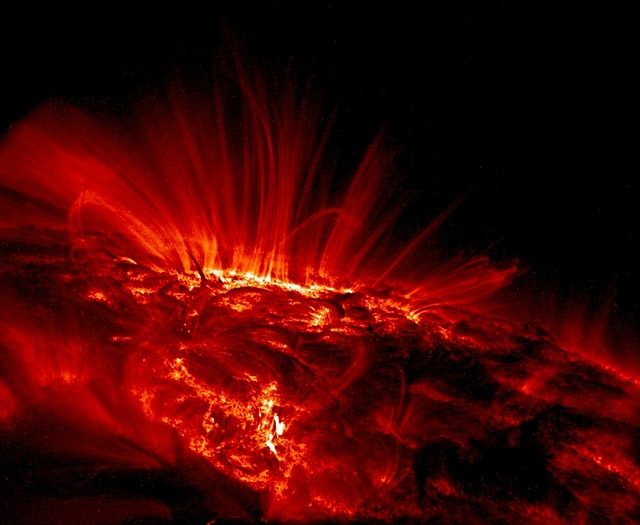To a photon, the sun is like a crowded nightclub. It’s 27 million degrees inside and packed with excited bodies—helium atoms fusing, nuclei colliding, positrons sneaking off with neutrinos.
When the photon heads for the exit, the journey there will take, on average, 100,000 years. (There’s no quick way to jostle past 10 septillion dancers, even if you do move at the speed of light.) Once at the surface, the photon might set off solo into the night. Or, if it emerges in the wrong place at the wrong time, it might find itself stuck inside a coronal mass ejection, a mob of charged particles with the power to upend civilizations.
The cause of the ruckus is the sun’s magnetic field. Generated by the churning of particles in the core, it originates as a series of orderly north-to-south lines. But different latitudes on the molten star rotate at different rates—36 days at the poles, and only 25 days at the equator. Very quickly, those lines stretch and tangle, forming magnetic knots that can puncture the surface and trap matter beneath them. From afar, the resulting patches appear dark. They’re known as sunspots. Typically, the trapped matter cools, condenses into plasma clouds, and falls back to the surface in a fiery coronal rain. Sometimes, though, the knots untangle spontaneously, violently. The sunspot turns into the muzzle of a gun: Photons flare in every direction, and a slug of magnetized plasma fires outward like a bullet.















